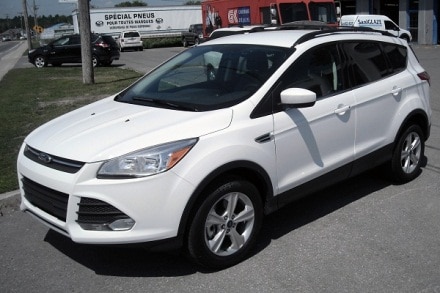When Ford launched their Kuga crossover in the year 2013 in China, drivers were willing to pay more to get an earlier delivery. Today, there's a backlog of unsold Kugas stacking up at dealership lots.
Whomever said patience is a virtue was pretty smart! The people that have waited are now able to buy a Kuga at a much lower price.
Even a discount of 20 percent isn’t appealing to customers that much. Ford has sold 18 percent fewer Kugas during the first half of this year as compared to 2015. It seems they better slow down production of Kugas.
Automakers are under a lot of pressure to offer unique services or products in order to maintain their share of the Chinese market. This isn’t much of a problem for Ford since it was late to the party and is far behind rivals when it comes to brand image or product lineup as domestic auto manufacturers start gaining traction.
What changed?
The fast deceleration of the Kuga from being one of the top sellers in the country shows the challenges which foreign automakers face in the largest auto market in the world. Growth here is moderate and domestic rivals have been offering new cars at a quicker pace with similar technology at lower prices. This is putting a squeeze on the profit margins of these automakers. The top-selling SUV for the first seven months of 2016 was the Haval H6 which costs less than $14,000.
Future plans
The company is going to respond to their falling market share with a number of new-model launches before the year ends. This will also include a revamped Kuga which comes with a fuel-efficient engine, a new grille design, and a communications system.
These are all excellent selling points, but there is no saying whether they are going to guarantee success to Ford. This segment has been saturated in China and consumers now prefer the larger crossovers in order to accommodate more people. They want to pile in their grandparents, uncles, and aunts. Ford should not have a problem with this; Ford knows how to make large, fantastic SUVs. But meeting the low Chinese price point could be a challenge.
New car sales
The new car sales in the country have gone up from two million in 2000 to more than twenty-four million in 2015. But now, manufacturers have cooled their ambitions. Toyota said earlier that it was uncertain about hitting targets of selling 2 million cars by 2025. Volkswagen expects slower growth too, and was worried about the unclear picture that the expiration of tax breaks on small engine vehicles made everyone uncertain about 2017.
Four years ago, Ford unveiled their $5 billion plan of doubling production capacity in the country by 2015. But it had trouble in the last few months. They had an $8 million loss before taxes in the 2nd quarter of this year amid a decline in sales and weak pricing.
Income fell by 28 percent during this quarter, and Ford says this was because of an 8-week shutdown of one plant in Chongqing which resulted in the loss of 40,000 production units. Well, at least Ford did not send classified emails via an unprotected server from their basement!
Dealer networks
Another challenge in China is the dealer networks. They don't feel incentivized enough to push the sales of Ford because the targets are too high, and this prompts dealers to discount their cars even more. Even if they can achieve 100 percent of their sales targets, the bonuses won't be good enough to cover the losses.
Ford said they were happy with inventory levels and continued working with dealers to provide customers with clear and compelling offers in the auto market. But pressure is increasing on Ford and their rivals to maintain their market share. Chinese customers aren't as loyal to brands. That's what makes it harder.






